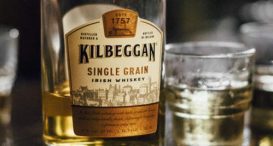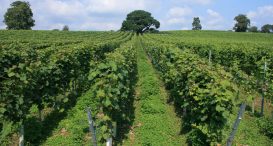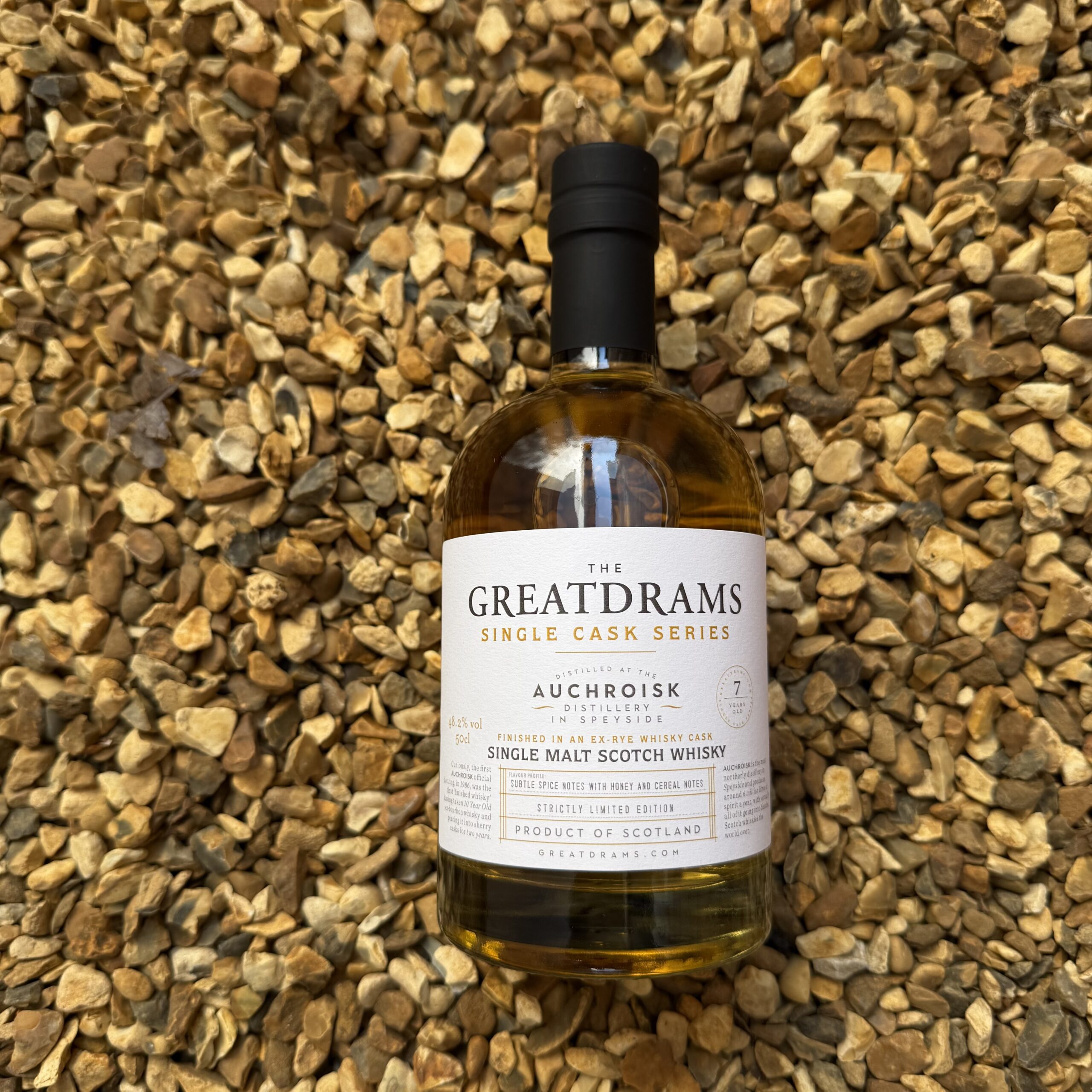Whisky Casks – Everything You Need to Know
When people think of whisky distilling, typically they’ll focus on things such as water, grain, peat, and so on. Don’t get me wrong, all of these things, and plenty more besides, are essential for producing whisky, but so too are whisky casks.
A whisky cask or barrel is equally as important as any other ingredient in the whisky, as it can drastically influence the overall flavour, aroma, and even the finish of the whisky itself. Some experts believe that a whisky takes on as much as 80% of its overall character from the cask it has been matured in.
Now, because we’re so fortunate to do what we do, we here at GreatDrams have encountered every kind of whisky cask imaginable. We’ve sampled whisky/whiskey from sherry cask, bourbon casks, port casks, rum casks, madeira, wine, you name it, we’ve sampled it. There are even whiskies out there which are aged in casks that have previously been used to store food such as herring.
Whisky casks are essential when it comes to whisky maturation, especially for independent bottlers, but why are these barrels so important, and how do they differ? Here’s everything you need to know about whisky casks.
Previous Contents
As you probably know already, a cask’s previous contents can have a huge influence, not only on the way that a whisky tastes after finishing and maturing, but also in how it smells, how it looks, and on the mouthfeel.
One thing I cannot stress enough, is that a whisky isn’t guaranteed to taste like the liquid previously stored in the cask. A whisky matured in an ex-Oloroso sherry for example, is not guaranteed to taste like the sherry that came before it. What tends to happen is that the whisky may pick up certain nutty or fruity notes from the sherry that had soaked into the wood.
Bourbon casks are very common over here and after charring, the American oak wood, combined with the notes from the bourbon, help give sweet vanilla, maple syrup, and caramel notes to the whisky. You’ll also find port casks, madeira, red wine casks, rum casks, and even beer kegs can also be used to great effect.
As whisky production continues to evolve, we’re seeing more whiskies being finished in casks once considered rare in the world of whisky. Port and rum casks are fine examples of this, and if done right, these can be truly exception.
Here at GreatDrams, we’ve utilized plenty of different casks over the years, though we’re not quite brave enough to go the ‘Fishky’ route and opt for an ex-herring fish cask, but who knows in the future?
Barrel Size
One of the most obvious ways in which whisky casks can differ from one another is their size. The smaller the size of the cask, the more flavour from the wood is likely to be imparted into the whisky itself.
The smallest whisky cask size is what is known as a ‘blood tub’ and is rarely used in commercial distilling anymore. Originally, it was used because it was easy to transport on horseback as it was so small. A blood tub would hold an average of 50 litres of spirit.
On the other side of the coin, in commercial whisky production you tend to find much larger casks, capable of storing much more whisky. Three of the largest casks used in whisky maturation are the Butt, Port Pipe, and Gorda. These can hold 500, 650, and 700 litres of spirit respectively. Butts are usually originally designed to hold sherry, Port Pipes hold port wine, and Gordas for blending whiskies.
The American Standard Barrel (ASB) is commonly used barrels in whisky maturation. It was designed with ease of use in mind, and, holds a respectable 200 litres of spirit. Made from American white oak, it’s typically used in bourbon production.
Here in the UK however, particularly in Scotland, it is the Hogshead that is most commonly used. Don’t worry, it isn’t called as such because it used to contain a pig’s head, or anything as grim as that. The name is actually derived from a term used in 15th Britain for a unit of measurement the equivalent of 63 gallons. That term was ‘Hogges Hede.’ Typically, Hogshead casks store between 225 and 250 litres of spirit.
Reuse of Casks
If you’ve ever tried to source an old whisky cask online, if you’re anything like me you’d have hyperventilated when you saw the price. These casks are not cheap, and that’s putting it mildly. When you see just how much skill and craftsmanship goes into repairing and assembling these barrels however, you’ll understand why that is.
Because whisky casks are so expensive, you can understand why some whisky producers would use casks over and over to mature their whisky, rather than buying more casks. However, the more a cask has been used, the less colour and flavour will be imparted into the whisky. That’s why it’s rare to find a cask that has been used for more than three refills.
A first-fill cask is exactly that – a cask that has been filled with whisky for the first time. If a cask has been filled with whisky at least twice, it is known as a refill cask.
A lot of Scotch whisky will first be matured in ex-bourbon whiskey casks from America. This is because they’re readily available as bourbon must be aged in new casks. That means that, once the cask has been used, it can’t be used again. They’re usually broken down and shipped to Scotland, where master coopers will reassemble them, usually with extra staves to increase their volume.
There is only one working cooperage remaining in the UK, and that is located in Speyside, as part of the Speyside Whisky Trail. I find that aptly named Speyside Cooperage fascinating, and I’m sure you will too, so keep your eyes peeled for a blog on that in the near future.
Type of Wood Used
When it comes to whisky casks, wood is not just wood. The type of wood used to make a cask can massively influence the overall quality of the whisky contained within.
For Scotch whisky production however, oak is very much the wood in favour. Specifically, European oak and American oak.
European oak has more of an earthy, spicy finish to it. Therefore, whiskies with earthy and spicy notes work very well in casks made from this material. American oak however, is much milder and sweeter, especially after being charred. Speaking of which…
Charring the Casks
Finally, before I wrap things up today, I’m going to talk about the charring of the barrels. This particular aspect of whisky production isn’t talked about enough in my opinion, despite it playing such a crucial role, especially in the production of bourbon.
All whisky casks are charred. In America, by law, bourbon must be aged in first-fill American oak casks which have been charred or toasted. This process literally requires the inside of the barrels to be burnt. This is to create what is known as the ‘Maillard effect’ whereby the natural sugars found within the wood are caramelized. This helps to bring out those sweet, vanilla, nutty, and spicy notes from the oak.
Contrary to what some may tell you, charring the wood imparts very few smoky notes. It instead helps open up the wood, increase its surface area, and caramelize its sugars to help the whisky absorb more of these sweet, fruity, spicy, nutty flavours.
And that, was a quick look at how and why casks are so important when it comes to whisky production. Who would’ve thought that barrels could be so interesting?
If you’re looking for rare, award-winning, limited-edition, unique, and delicious Scotch Whiskies, look no further than Greatdrams.com and check out the huge selection of fantastic whisky products that we have available.
Here you’ll find all manner of different whiskies, primarily Scotch, to suit all palates and budgets, that you simply can’t find elsewhere. We also have an extensive array of whisky/whiskey-related information so you can learn more about your favourite drams, how they’re made, and the distilleries that produce them.
Whether you’re looking for a smooth and creamy Lowlands whisky, a heavily peated dram from Islay, a smooth and fruity Speyside expression, or anything in between, here at Great Drams we’ve got whisky from all regions, to suit all preferences.












